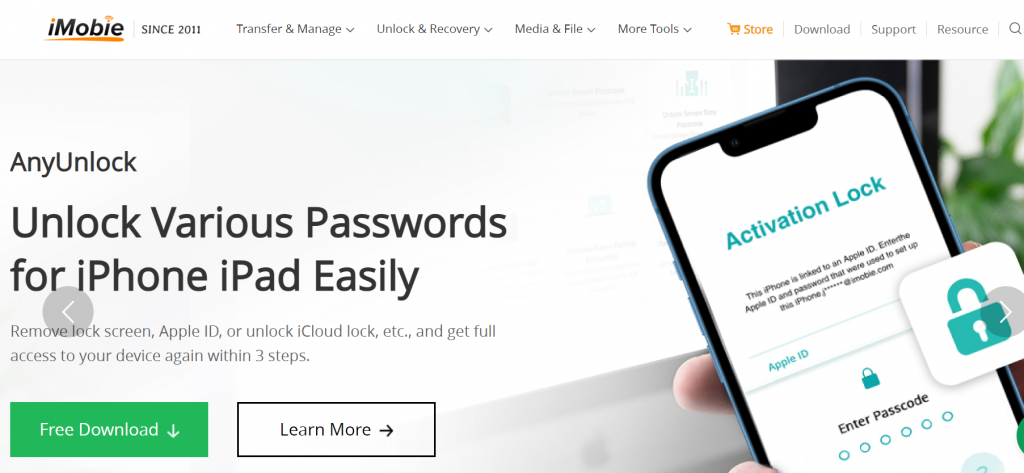
Introduction: The importance of unlocking your iPhone password
We’ve all been there—your iPhone is locked, and you can’t remember your password. Panic sets in as you think about the photos, contacts, and messages trapped inside. It’s frustrating, but fear not! Unlocking your iPhone without losing data is possible. Whether it was a forgotten passcode or a mishap with an old password, understanding how to regain access can save you from unnecessary stress. Let’s explore simple steps that will help you unlock your device while keeping your precious information intact.
Have you ever found yourself staring at your iPhone, feeling a mix of frustration and panic because you’ve forgotten your password? It can happen to anyone. One moment you’re scrolling through photos, and the next, you’re locked out of your own device. Your phone holds precious memories, important contacts, and vital information. The last thing you want is to lose all that data just because the screen is asking for a passcode that seems to have slipped from your mind.
Step 1: Determine if you have a passcode or a password
Before you dive into unlocking your iPhone, it’s crucial to identify whether you’re dealing with a passcode or a password. While these terms are often used interchangeably, they serve different purposes on your device.
A passcode typically refers to the numeric code that locks your screen. It’s usually four to six digits long and protects access to your phone’s features. If you’ve set up Face ID or Touch ID, the passcode acts as a backup for situations when biometric verification fails.
On the other hand, an Apple ID password is required for accessing services like iCloud or the App Store. This alphanumeric combination secures not just your device but also personal data stored in Apple’s ecosystem.
Understanding which one you’re facing can streamline the unlocking process and save you time and frustration down the line. Take a moment to assess; it will pay off later.
Step 2: Try the default passwords

Before diving into more complex solutions, it’s worth taking a moment to try some common default passwords. Many users stick with simple codes that are easy to remember.
If your iPhone is part of a family plan or shared account, check if anyone used widely known combinations like “1234” or “0000.” Sometimes, people revert to these basic options out of convenience.
Another possibility could be the last four digits of your phone number or even the year you were born. These can often slip under the radar but might just work in your favor.
Be cautious though; entering incorrect passwords too many times may lock you out temporarily. It’s all about giving yourself a fighting chance before moving on to more advanced recovery methods.
Step 3: Use iTunes to reset your passcode
If you prefer a more traditional approach, using iTunes could be your go-to method for resetting your passcode. First, ensure you have the latest version of iTunes installed on your computer. This is crucial to avoid compatibility issues during the process.
Next, connect your iPhone to the computer via USB. Once connected, launch iTunes and select your device when it appears in the program. If prompted for a password at this stage, remember that you’ll need to use another method earlier discussed.
Now it’s time to initiate recovery mode. Depending on your iPhone model, hold down specific buttons until you see the recovery mode screen. From there, choose “Restore” when prompted by iTunes.
This action will erase all data on your device along with that pesky passcode. Afterward, you can set up your phone as new or restore from a backup if available.
Step 4: Use iCloud to erase your device and unlock it
If you’re unable to remember your iPhone password, using iCloud could be a viable solution. This method allows you to erase your device remotely, which also removes the passcode.
First, ensure that Find My iPhone is activated on your device. If it is, head over to the iCloud website from another device. Log in with your Apple ID credentials.
Once logged in, select “Find iPhone.” You’ll see all devices linked to your account. Choose the locked device and click on “Erase iPhone.” This action will wipe everything from the phone including the passcode.
After erasing, you can set up your device as new or restore it from a backup if available. Keep in mind that this process will delete all data stored on the phone unless you’ve backed it up beforehand.
Our Recommendation: iMobie Website

Unlocking your iPhone password without losing data can be a daunting task. However, with the right steps and tools, it’s entirely achievable. If you find yourself struggling through any of these methods or simply want a more efficient solution, consider checking out iMobie.
The iMobie website offers various tools designed to help users recover their devices seamlessly. Their software is user-friendly and effective in addressing multiple issues related to locked phones. Whether you’re facing complications from forgotten passcodes or need assistance with device management, they have solutions tailored for all needs.
Exploring their offerings could save you time and effort while ensuring that your valuable data remains intact. So if you’re looking for a reliable partner in keeping your iPhone secure yet accessible, give iMobie a visit.





